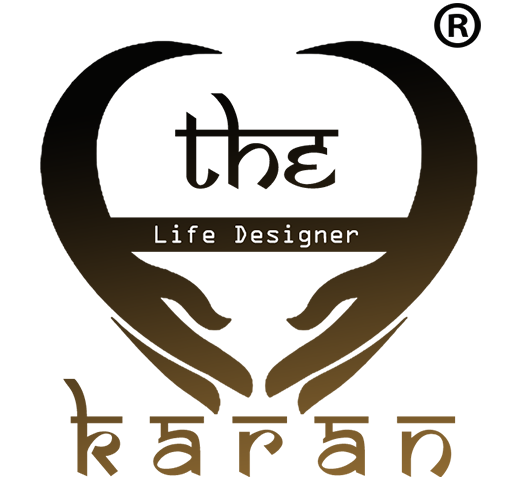Leaving a toxic relationship is not just the act of ending a partnership — it’s the beginning of an emotional and psychological healing process that often takes far longer and goes much deeper than we expect. Whether your toxic relationship was defined by manipulation, control, emotional abuse, or simply a steady erosion of your self-esteem, its effects don’t vanish when you walk away.
1. Understand What Toxicity Really Looks Like
Many people don’t realize they were in a toxic relationship until they’re already deeply entangled. That’s because toxicity doesn’t always appear dramatic or obvious; it can creep in slowly, disguised as “passion,” “miscommunication,” or “normal ups and downs.”
At its core, a toxic relationship is one where one or both people consistently hurt each other, whether emotionally, psychologically, or physically. Common signs include:
- Manipulation: Your partner uses guilt, fear, or deception to control your actions or thoughts.
- Gaslighting: They make you question your memories or perception of reality, often denying things they said or did.
- Disrespect of boundaries: Your needs, feelings, or limits are repeatedly dismissed or violated.
- Emotional volatility: The relationship swings between extreme highs (affection, apologies, promises) and extreme lows (anger, coldness, cruelty).
- Isolation: You’ve been distanced from friends, family, or activities you once enjoyed.
- Walking on eggshells: You often felt anxious about setting them off or worried about their reactions.
Recognizing these patterns after the fact is critical because naming what you experienced helps you process it. Without clarity, many people fall into cycles of self-blame, wondering if they were “too sensitive” or “too demanding.” No matter what, toxic dynamics take two people to create, but only one to break free.
2. Why Healing Takes Time
Many people believe that once they leave a bad relationship, they should immediately feel better — free, empowered, and relieved. But the reality is much more complicated. Healing after toxicity takes time, often longer than you think, and here’s why:
- Emotional wounds run deep. When someone you loved (and perhaps still love) has hurt you over time, the damage doesn’t disappear when they’re gone. You may carry unresolved grief, anger, or sadness.
- Your identity has been shaped by the relationship. You may need time to rediscover who you are outside of the patterns you lived within, especially if the relationship consumed your self-image.
- Your nervous system is recovering. Toxic relationships keep your body in a state of heightened stress, anxiety, or even trauma. When it’s over, your body and mind need time to decompress, regulate, and rebuild a sense of safety.
- Trust in yourself may have eroded. You might wonder, “Why did I stay so long?” or “Why didn’t I leave earlier?” This self-questioning can slow the healing process if you’re harsh or judgmental with yourself.
Understand that healing is not a race. Some days will feel like breakthroughs; others will feel like you’re back at square one. Both are part of the journey.
3. Create Safe Boundaries for Your Mind and Heart
After leaving a toxic relationship, one of the most important steps is creating boundaries — not just externally but internally. Boundaries aren’t only about blocking your ex’s number or avoiding certain places; they’re also about protecting your mind from being drawn back into unhealthy patterns.
Here are key boundaries to consider:
- Physical and digital distance: If possible, cut off or reduce contact. Block numbers, unfollow on social media, or establish clear guidelines if you must co-parent or work together.
- Mental boundaries: Notice when you start ruminating about the past — replaying arguments, fantasizing about reconciliation, or obsessing over their current life. Gently remind yourself that you are no longer responsible for their emotions or choices.
- Social boundaries: Ask mutual friends not to share updates or news about your ex. Resist the urge to check up on them. Give yourself emotional breathing room.
- Self-boundaries: Watch for negative self-talk that mimics the toxicity you escaped. If you notice harsh inner criticism, pause and challenge it: Would you speak to a friend this way?
Setting these boundaries is not about punishment — it’s about creating the space your heart and mind need to rebuild.
4. Build a Support System That Actually Helps
Not everyone around you will know how to support you in your healing, so it’s essential to choose your support system carefully.
A healthy support system includes:
- People who listen without judgment. Look for friends or family members who can sit with your pain without rushing to fix it or minimize it.
- People who validate your experience. You don’t need people to “take sides,” but you do need people who believe your version of events and acknowledge your feelings.
- Professional help when needed. Therapists or counselors can help you unpack the emotional and psychological patterns that kept you stuck, and help you avoid repeating them in the future.
- Support groups or online communities. Sometimes, it helps to hear from others who have walked a similar path. Shared experiences can make you feel less isolated and provide practical tips for healing.
Be cautious of people who pressure you to “move on” too quickly, who shame you for your feelings, or who speak negatively about you trying to process your pain. Healing requires patient, empathetic company — not toxic positivity or rushed advice.
5. Reconnect with Yourself and Your Self-Worth
Perhaps the most beautiful part of healing is rediscovering who you are without the toxic influence. Toxic relationships often leave people feeling small, inadequate, or dependent. Rebuilding your sense of self takes time, but it’s incredibly rewarding.
Here’s how you can start:
- Revisit the activities and passions you left behind. Toxic dynamics often isolate you from your own life. What hobbies, interests, or dreams did you set aside? Reintroduce them into your routine.
- Practice self-compassion. Speak to yourself kindly, especially when you feel regret or grief. Healing isn’t about being perfect; it’s about showing up for yourself even when you feel messy or vulnerable.
- Reflect on what you’ve learned. What did this relationship teach you about your needs, your boundaries, or your resilience? Write it down, journal about it, or discuss it with someone you trust.
- Visualize a healthier future. Instead of focusing only on what you left behind, begin imagining what kind of life and relationships you want to cultivate. How will you show up differently? What will you no longer tolerate?
- Celebrate progress. Healing is made up of small moments — a peaceful evening, a day without intrusive thoughts, a brave boundary set. Notice and honor these milestones.
Remember: you are not defined by the relationship you left. You are defined by the courage it takes to heal, grow, and move forward.
Final Thoughts: Your Healing Is Worth It
Recovering from a toxic relationship is one of the most challenging and transformative journeys you can undertake. It’s not just about forgetting the past — it’s about reclaiming your present and shaping your future.
You deserve relationships rooted in respect, trust, and love — including the relationship you have with yourself. Be patient. Surround yourself with people who truly support you. And above all, remember that healing is not about becoming someone else; it’s about returning to the person you were always meant to be.
At The Karan, we understand that every relationship journey is unique—whether you’re going through a breakup, struggling to move on, or facing commitment challenges. Through our spiritual healing practices, we’re here to guide you with empathy, clarity, and compassion, helping you find peace and empowerment from within.
You are worth the time, the effort, and the love it takes to fully heal.












